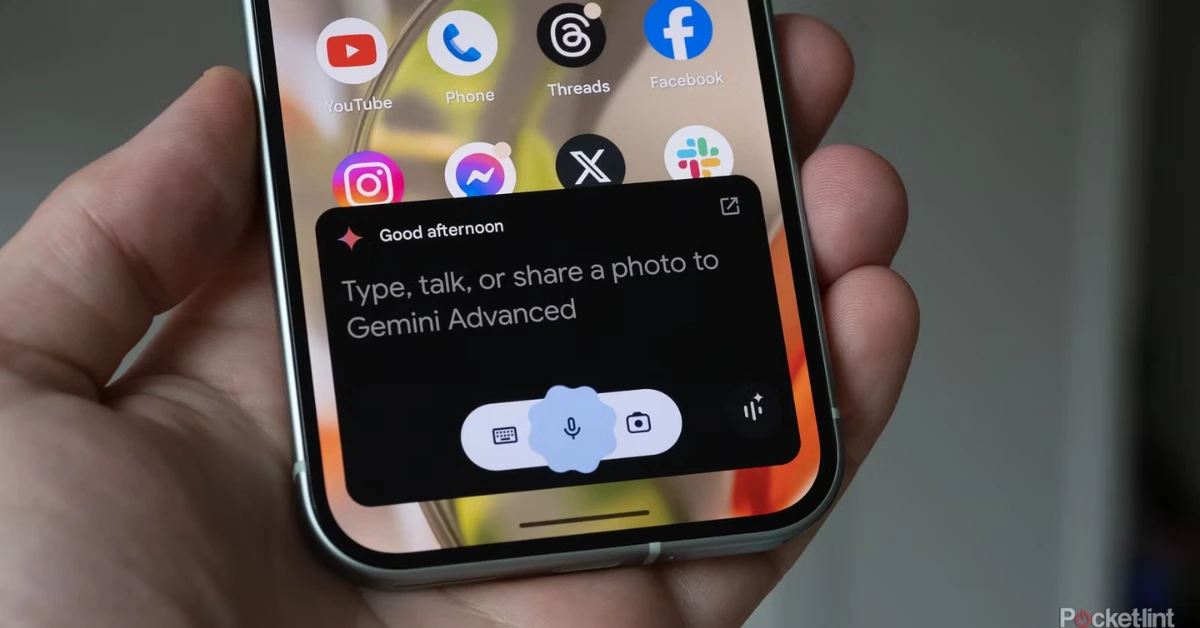Until recently, generative AI tools could only run on expensive, high-end devices or cloud servers. They needed powerful processors, constant internet access, and a lot of money to operate.
That’s now changing fast. With Gemini Nano, Google’s smallest generative AI model, even affordable smartphones can perform complex AI tasks like summarising notes or generating replies, all without relying on the cloud.
Gemini Nano marks a new era of AI that is faster, more private, and more accessible. It brings advanced intelligence to millions of users, showing that true innovation can fit inside your pocket.
From cloud AI to on-device intelligence
For years, most AI tools have relied on cloud computing. When you made a request, your phone sent the data to a remote server, waited for analysis, and then received the result.
That process worked, but came with drawbacks; it caused delays, used a lot of data, and raised privacy concerns. Low-end phones especially struggled because they lacked the memory and processing power to handle such heavy workloads.
Google’s shift to on-device AI changes this. Instead of depending on distant servers, models like Gemini Nano run directly on the smartphone’s built-in neural hardware. This means faster, safer, and more dependable AI even on cheaper phones.
How Gemini Nano works on low-end devices
1. Smarter and smaller model design
Gemini Nano is a lightweight version of Google’s main Gemini model. It’s built for efficiency rather than size. Engineers use three key techniques to make it smaller and faster:
- Quantisation reduces how data is stored, shrinking memory use.
- Distillation trains a smaller “student” model to learn from a larger “teacher” model.
- Pruning removes unnecessary parts that don’t affect performance.
Together, these methods make Gemini Nano small enough to fit on a mobile device while keeping it smart enough to handle generative tasks such as text drafting and audio summarising.
2. Hardware acceleration through AI chips
Modern smartphones now come with Neural Processing Units (NPUs), special chips designed for AI tasks. Gemini Nano uses these chips to perform complex calculations faster and with less battery drain.
- Google’s Tensor G3 chip powers Gemini Nano features in Pixel devices.
- Qualcomm’s Snapdragon AI Engine and MediaTek’s APU perform similar roles on other Android phones.
By using NPUs, Gemini Nano can run smoothly even on mid-range devices without slowing them down. This perfect balance between software and hardware makes on-device AI truly practical.
3. Edge computing and offline capability
Gemini Nano uses edge computing, meaning all major processing happens directly on your phone instead of in the cloud. This removes the delay of sending data back and forth to a server.
The result is instant responses. Whether summarising a voice note or suggesting replies in a chat app, Gemini Nano works offline or with little internet.
It also improves privacy, as your data stays on your device rather than being uploaded to external servers. This is especially useful for users in regions with poor internet access.
4. Energy efficiency and thermal control
Running AI models on phones could easily drain the battery or cause overheating. Gemini Nano avoids this by managing resources intelligently.
The model activates only when needed and uses energy-efficient scheduling. Combined with smaller model sizes and NPU optimisation, this approach provides fast performance without reducing battery life.
For users, this means smooth multitasking, minimal lag, and long-lasting battery power even during heavy AI use.
Related article: What makes Nano AI so fast on mobile devices
What can Gemini Nano do today?
Despite its small size, Gemini Nano performs many of the same functions as larger AI systems but is designed for mobile use. Some of its current features include:
- Smart summarisation: The Recorder app on Pixel phones can turn long audio files into short bullet summaries.
- Contextual messaging: Gboard offers tone-matched replies and suggestions without using the cloud.
- Offline assistance: Features like live transcription, captions, and note drafting work fully on-device.
- Content creation: Users can generate captions, prompts, or short texts in seconds.
These features show how AI is evolving from being just part of apps to becoming an essential layer of the mobile experience.
Why this matters for tech professionals
For tech professionals, Gemini Nano opens up new opportunities. It shows how AI can be made accessible to everyone, not just those with high-end phones.
Developers can now create apps that run smoothly on low-cost devices, cutting down cloud expenses. Start-ups in emerging markets can build productivity and education tools that work offline and on entry-level Android phones.
Since Google offers Nano within its wider Gemini ecosystem, developers can easily test APIs, integrate generative features, and scale apps locally before connecting to cloud-based versions.
In short, Gemini Nano helps creators build affordable, efficient AI solutions for a global audience.
AI accessibility and inclusion
Gemini Nano is not just a technical innovation; it’s also about inclusion. For years, generative AI was mostly available in wealthier regions with fast internet and expensive devices. Nano changes that. It brings high-quality AI tools to users in places where network coverage or device performance is limited.
This movement towards AI accessibility is also being supported by companies like Apple, Samsung, and Qualcomm. Together, these efforts are making AI available to more people, everywhere.
Gemini Nano is a big step towards that goal, proving that good design can make intelligence universal. Looking ahead, Gemini Nano’s progress points to a future where AI quietly runs in the background of every device, helping with translation, creativity, and productivity.
As model compression and mobile chips continue to improve, even basic phones and wearables will be able to run generative AI locally.
For developers, this means focusing more on efficiency and inclusion rather than just power and size. If 2024 was the year AI became mainstream, 2025 is the year it becomes mobile, and Gemini Nano is leading the way.
Get passive updates on African tech & startups
View and choose the stories to interact with on our WhatsApp Channel
Explore




